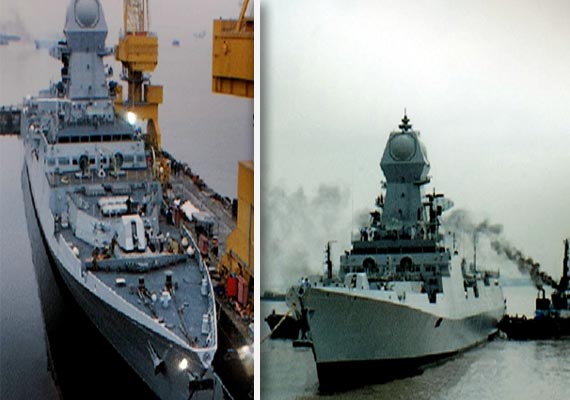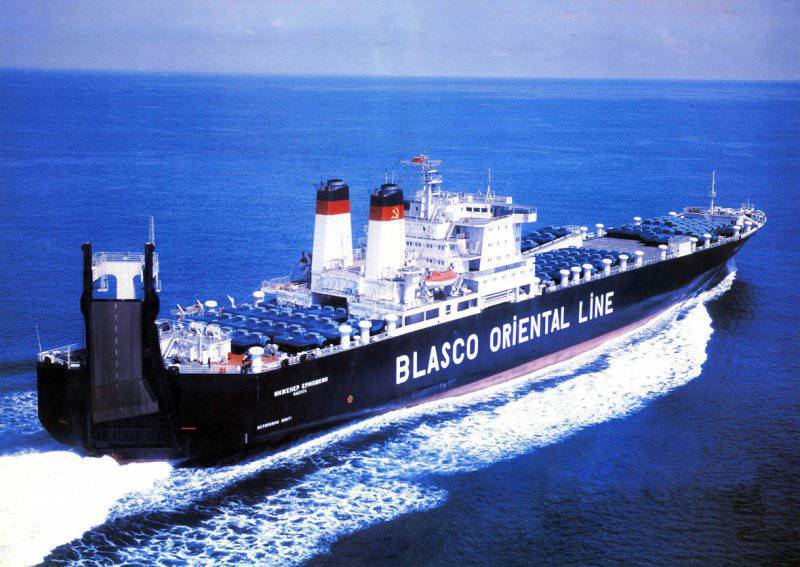
Posted on 05/09/2014 2:42:46 AM PDT by sukhoi-30mki
Indian warship building is coming of age and the Indo-Pacific region knows it. Last week, when an Indian Navy frigate, INS Shivalik, visited China’s Qingdao naval base, China’s navy chief, Admiral Wu Shengli, asked the captain for a tour of the Combat Information Centre, the operation heart of the warship. The Shivalik’s young skipper, Captain Puruvir Das, turned down Wu’s request.
The Chinese admiral would be even more interested in touring INS Kolkata, 7,200 tonnes of bristling steel, which could join the navy as early as next month as the most powerful and high-tech warship in its 140-vessel fleet. Tonne for tonne, the Kolkata will be amongst the most potent battleships in the hotly contested waters of the Indo-Pacific.
Significantly more versatile than the destroyers and frigates that preceded it, the Kolkata’s all-round capability --- against enemy submarines, surface warships, anti-ship missiles and fighter aircraft --- will permit it to operate without a bevy of supporting vessels, and also to function as the flagship of a naval task force.
Manned by 325 crewpersons, the Kolkata has an operating range of 15,000 kilometres, extending across the Indian Ocean to the Atlantic and the Pacific. Its four Ukrainian gas turbine engines propel the vessel at 60 kilometres per hour. Two helicopters on board further extend its reach.
The first of three destroyers being built at Mazagon Dock Ltd, Mumbai (MDL) under Project 15A, INS Kolkata has been long in the making. Construction began in 2003 and the vessel was launched in 2006. Thereafter, it has spent eight years in the water while the cutting edge weapons the navy wanted were stuck in the development pipeline.
Amongst these, according to a 2010 CAG report is the Long-Range Surface-to-Air Missile (LR-SAM) that the navy insisted should replace the venerable Russian Kashmir missile system. The LR-SAM shoots down incoming anti-ship missiles (ASMs) at ranges out to 70 kilometres, protecting the ship far more effectively than the Kashmir. But it has only been operationalised now after India’s Defence R&D Organisation (DRDO) and Israel Aerospace Industries (IAI), working in partnership, overcame persistent technological challenges. Even so, the Kolkata is being delivered only with missile launchers fitted, while the 64 missiles that form the ship’s complement will be added later.
With technological hurdles crossed, further delay was caused by a tragic accident on March 7, when a naval officer died while testing the Kolkata’s fire fighting system. Now, with investigations into that accident almost concluded, the decks are clear for INS Kolkata to join the fleet.
The two remaining destroyers of Project 15A will follow in short order. By October the second of the class, INS Kochi, is slated to be delivered. INS Chennai will follow her in mid-2015.
Project 15A will eventually cost the navy Rs 11,662 crore. At Rs 3,900 crore per destroyer, that is barely one-third what the UK’s Royal Navy has paid for its new Type-45 Daring-class destroyers --- Rs 11,000 crore per vessel.
Yet many regard the Kolkata as more versatile and capable than the Daring. Alongside the world-beating LR-SAM, the Kolkata’s 16 Brahmos supersonic cruise missiles allow pinpoint strikes on enemy ships and land targets as far away as 295 kilometres.
Besides anti-air, anti-ship and anti-surface capabilities, Project 15A destroyers are also potent anti-submarine platforms. New generation HUMSA hull-mounted sonar, supplemented with the Nagan active towed array sonar --- both developed by the DRDO and built by Bharat Electronics Ltd (BEL) in India --- are adept at picking up enemy submarines, especially in Indian waters with their distinctive temperature gradient. The destroyer can then engage them with heavy torpedos at ranges out to 100 kilometres, or with an Indigenous Rocket Launcher (IRL) built by Larsen & Toubro.
The Kolkata’s predecessor, the Project-15 Delhi-class destroyer, was considered a beautiful warship, its clean lines a purist’s delight. The Kolkata’s deck has similar lines, but the aesthetics are interrupted by steel plating extending up the sides --- characteristic of a stealth warship. These armour plates, tilted 6-8 degrees to deflect radar waves rather than reflect them straight back to the enemy, make it difficult to detect this warship at a distance.
Interestingly, the Kolkata-class is almost 2,000 tonnes heavier than its predecessor --- the Project 15 Delhi-class destroyers --- because of its heavier armour plating. Despite that, it moves as fast as the Delhi-class, propelled by the same Ukrainian turbines. This, say MDL engineers, indicates how much they have improved its propulsion system.
In the wake of Project 15A, MDL has already begun the follow-on Project 15B. This involves constructing four more destroyers for Rs 29,325 crore. These are being built from indigenous warship steel, developed by SAIL and supplied by Essar. The first Project 15B destroyer is required to be delivered in July 2018, with the three subsequent ships following at two-year intervals, i.e. July 2020, 2022, and 2024.

Good job india — now you need 20 more of these. Control the Indian ocean!
Interesting that they chosen a heavier platform. This is on the order of a light cruiser.
Looks like a cross between an RN Daring Class destroyer and one of those Spanish Aegis frigates ...
Actually, meant the De Zeven Provincien Class frigate, not the Spanish one ...
Anyone else notice they bought Ukrainian gas turbines? I wonder if the city where they where built, Nikolaiv, is on Putler’s acquisition list. Does that also imply that Ukrainian technology is equivalent to GE’s or Siemens’?
AFAIK, USN operates at least one former-Soviet ship built in Nikolaev.
The same turbines were used on the Delhi class ships, which precede the new vessels. So, it makes sense to stick to a common system.
-——the 64 missiles -——
My plan is to attack INS Kolkata with 70 missles
Do you know the name of this ship?
Haven’t battleships long been rendered obsolete by air power?
Any more info on that? I remember when the CC outfitted their new, at that time, cutters with combustion turbines. They were impressive. I was on a DDG that got left behind in a race off Gitmo.
First, a point of order. This is a destroyer, not a battleship. Now, on to the central question of your post: An aircraft’s missiles and bombs are indeed a threat to surface combatant ships. But there are many things that ships can do that aircraft cannot. They include, but are not limited to - persistent presence, detailed investigation of potential threats as opposed to simply shooting things, carrying a landing party (the Indian national oil company has contracted to exploit oil/gas fields in dispute with China, and carrying a far greater payload.
7,200 tonnes of bristling steel, Indeed! (Or Aluminum?)
I love the turban-shaped superstructure. Excessive top-hamper, but nice ethnic touch. Also plenty of space on the foredeck for the standard all-singing, all-dancing Bollywood Finale!
Interesting points. Thanks
 USNS LCPL ROY M. WHEAT formerly 'Vladimir Vaslyaev' a project 1609 aka Atlantika-class rolker. First built in 1979, all officially were a part of Soviet merchant marine, but they were designed by Russian Navy engineers and built in Ukraine as a non-economic super-fast vessels (26 knots) unfit for commercial shipping by default. It is believed that the idea behind these ships was to move armor across Atlantic in case of war. I couldn't find a photo of Wheat, but here is a photo of another such vessel.
USNS LCPL ROY M. WHEAT formerly 'Vladimir Vaslyaev' a project 1609 aka Atlantika-class rolker. First built in 1979, all officially were a part of Soviet merchant marine, but they were designed by Russian Navy engineers and built in Ukraine as a non-economic super-fast vessels (26 knots) unfit for commercial shipping by default. It is believed that the idea behind these ships was to move armor across Atlantic in case of war. I couldn't find a photo of Wheat, but here is a photo of another such vessel.
You combine this with Japan’s Naval buildup and this is the response that China gets when it tries to bully it’s neighbors. Unlike Western Europe, I feel we have reliable partners in the Indian Ocean and the Far East against China’s agression.
The Indian Navy also seems to be doing a lot of good work in combatting Piracy.
Read #16.
Wouldn't that take care of the "un-economic" aspect?
Disclaimer: Opinions posted on Free Republic are those of the individual posters and do not necessarily represent the opinion of Free Republic or its management. All materials posted herein are protected by copyright law and the exemption for fair use of copyrighted works.